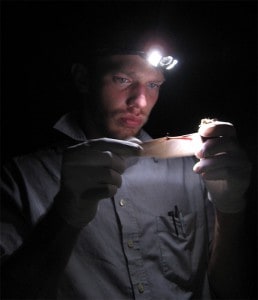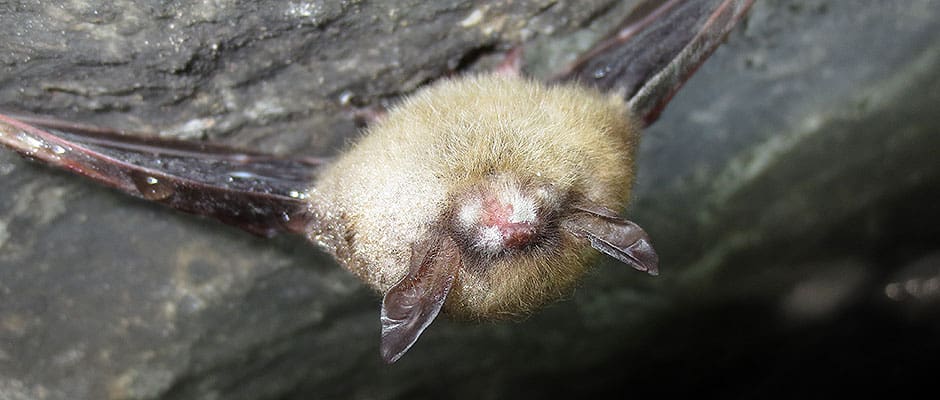Share this article
Natural Bat Bacteria Could Provide Cure for Killer Fungus
A naturally occurring bacteria found on some bats could be the key to fighting a deadly fungal disease affecting the flying mammals around the world.
“What’s promising is that the bacteria that can inhibit the fungus naturally occur on the skin of bats. These bacteria may just be at too low a level to have an effect on the disease, but augmenting them to higher abundances may provide a beneficial effect,” said Joseph Hoyt in a release. Hoyt is a graduate student from the University of California Santa Cruz and one of the authors of a study published yesterday in PLOS ONE.

UC Santa Cruz graduate student Joseph Hoyt examines a little brown bat for signs of white-nose syndrome such as a white fungus on the bat’s wings and face outside a mine in New York.
Image Credit: K. E. Langwig.
Hoyt said the researchers are currently conducting experiments treating bats infected with white-nose syndrome, a disease resulting from infections from the fungus Pseudogymnoascus destructans, to see whether bacteria from the Pseudomonas genus can effectively protect them.
“We are analyzing data from tests on live bats now and, if the results are positive, the next step would be a small field trial,” he said.
If the results are positive, the bacteria could be sprayed onto hibernating bats to give them extra protection in the winter when they are most vulnerable to the fungus. Other research by the lab of Marm Kilpatrick, a professor of ecology and evolutionary biology at UC Santa Cruz, has shown that bats can fight the infection off if they survive winter hibernation.
“The potential for a treatment is exciting, because this disease is raging across the country,” said Kilpatrick, also a coauthor of this new study.
Several bat species have been decimated by the white-nose syndrome, including the federally threatened northern long-eared bat (Myotis septentrionalis). “Everywhere the disease has been for a couple of years, this bat is gone. We don’t have any tools right now to protect this species,” Kilpatrick said.
Hoyt said that the fact that the bacteria occurs naturally on some bats could be why some species are more equipped to fight the fungus, though more research would be needed to confirm that.
Header Image:
A northern long-eared bat in Illinois shows the telltale signs of white-nose syndrome on its face.
Image Credit: J.R. Hoyt.








